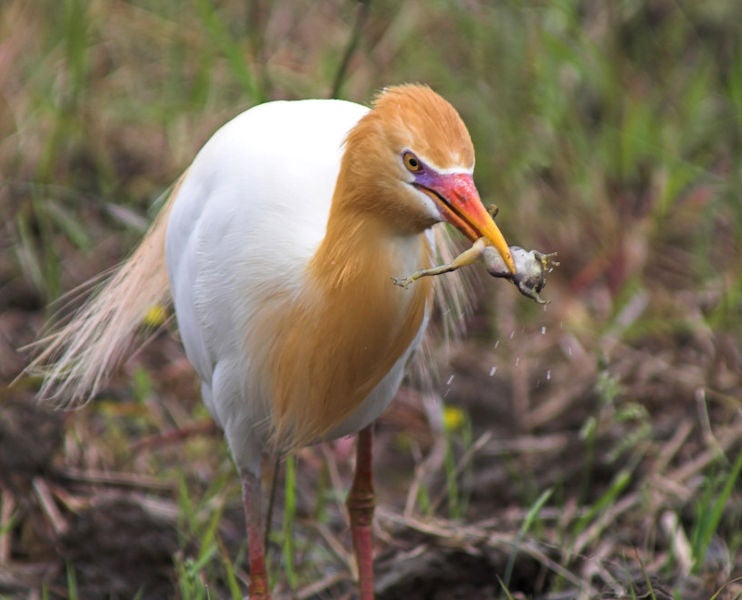Egrets? We've had a few
Rapidly spreading bird breeds in UK for first time as temperatures rise to warmer temperatures

Britain has a new species of breeding bird, it was announced yesterday – the cattle egret, a white heron which has spread out from Africa across the globe.
Warmer temperatures are thought to have encouraged the bird to expand its range northwards through Europe, and it has been seen in Britain in recent years.
Now, a pair of the birds, resplendent in the bright orange-buff plumes on the head and breast that signify they are breeding, have successfully raised at least one chick in a tree nest in an undisclosed location in Somerset, and it is thought that more will follow in coming years.
It is closely following the spread to Britain of a related species, the little egret, another white heron that began wintering in numbers here in the 1990s, and first bred on Brownsea Island in Poole, Dorset, in 1996.
Subsequently little egrets, which have a black bill as opposed to the cattle egret's yellow bill, virtually doubled their breeding numbers every year and there are now hundreds of pairs nesting across Britain.
Although the spread of the cattle egret is a fairly close parallel, it is an even more exotic species, as it is thought of primarily as African. "This is the bird that you see perched on the back of buffaloes and other big game in Africa, because that's where it evolved," said Stephen Moss of the Somerset Ornithology Society.
"But in the past 100 years or so, it has adapted to live alongside humans and live alongside cattle, and it forages among their feet to pick up worms and insects and other things to eat."
Although cattle egrets had been seen in the winter in twos or threes for some time, last winter there was "a big influx", with dozens of the birds in Cornwall and Devon, and half a dozen in Somerset, Mr Moss said. Somerset birdwatchers then noticed that two pairs did not go back to Europe when spring came but remained, and were seen in breeding plumage.
Although no one has yet seen the nest, which is in dense foliage, at least one chick has been seen. Mr Moss said: "The good news is that that chick has fledged and left the nest successfully, so that is the first baby cattle egret ever to be born and raised in Britain".
According to the Royal Society for the Protection of Birds, other new species may follow the cattle egret to Britain as the climate warms. "Potential species include the cattle egret's larger cousins, the great white egret and purple heron, which are both nesting in Holland," said the RSPB's Graham Madge.
Subscribe to Independent Premium to bookmark this article
Want to bookmark your favourite articles and stories to read or reference later? Start your Independent Premium subscription today.

Join our commenting forum
Join thought-provoking conversations, follow other Independent readers and see their replies